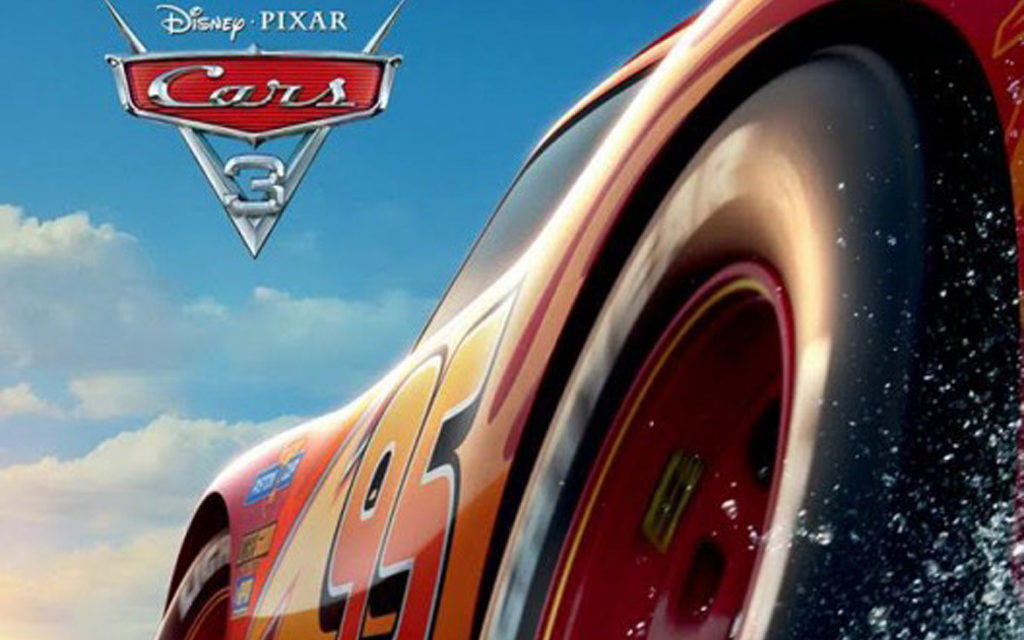by Bob Garver
“Cars” is probably the most unpopular arm of the Pixar universe. The first film was only moderately well-received, the sequel was the first eligible Pixar film not to be nominated for Best Animated Feature at the Oscars, and the two “Planes” spinoffs (which are from a non-Pixar branch of Disney) are direct-to-DVD-quality garbage.
To be clear, I liked the first two “Cars” movies and I don’t think Pixar has ever made a “bad” movie, but I don’t know why they’re dead-set on expending this franchise when they keep hitting a wall with anthropomorphic vehicles.
The movie once again follows racecar Lightning McQueen (Owen Wilson), who finds himself in possibly the twilight of his career. A flashy new racer (Armie Hammer) is winning races and forcing older cars into retirement.
Lightning wrecks trying to keep up with him and spends months feeling broken, figuratively and literally. Determined to make a comeback, he takes on new sponsor Sterling (Nathan Fillion), who is very generous, but has him train under the annoying Cruz Ramirez (Cristela Alonzo). He’s nearly forced to retire after a bad performance on a simulator he doesn’t understand (which is the equivalent of firing a football player for not immediate mastering one of those “Madden NFL” games), but he convinces Sterling to give him one more chance if he wins a race by going around the country and training his own way.
Sterling agrees, but makes him take Cruz with him. Lightning gets frustrated because Cruz needs to be able to race to keep up with him, and she can’t, so he has to teach her. The two go on rustic adventures, including a demolition derby and seeking out Smokey (Chris Cooper), mentor to Lightning’s late mentor Doc Hudson.
The problem that a lot of critics have with the “Cars” movies is that it’s not clear exactly how this world works. Questions are constantly being raised like “Were the cars built or were they born?” “Do they eat food or do they get by on gasoline?” “How did all the buildings and stadiums get built if nobody has any hands?” and of course “Did humans ever exist in this world?”
I’ve typically tried to ignore these questions under the umbrella of “suspension of disbelief,” but this movie makes it so hard. There’s a lot of material about the aging Lighting pushing his body to the limit, and it begs so many questions about how the cars’ bodies work that I can’t get lost in this world the way I’m supposed to.
There are problems left and right in this movie. Like how the announcers never stop talking about Lightning despite his star supposedly fading. Or how returning characters like Mater (Larry the Cable Guy) are inserted awkwardly into the movie via video chat, which is a good way of sneaking in actors that you can’t get on set, but why do it in an animated movie?
We’re supposed to feel sorry for Cruz because she’s a “trainer” and not a “racer,” but she’s a highly-respected trainer at the hottest facility in the country, so she’s obviously doing well for herself. She’d be more sympathetic if she were more repressed. Then there’s the ending, which is going to get a lot of complaints. In a movie about talking, living cars, the rule-bend in the climactic race is the most unbelievable thing about it.
“Cars 3” has so much going against it, and yet it’s impossible for me to dislike this movie because the Pixar magic is out in full force. I like the performances, the jokes, the dialogue in winsome and serious moments, the detailed animation (did they slip some live-action backgrounds in there or are they just that good?).
This is by no means one of Pixar’s best movies, and I would even say it’s valid to call it a disappointment. But Pixar’s streak of never making a bad movie is still intact. “Cars 3” passes inspection, but just barely.
Two and a Half Stars out of Five.
“Cars 3” is rated G. Its running time is 109 minutes.
Contact Bob Garver at rrg251@nyu.edu.




